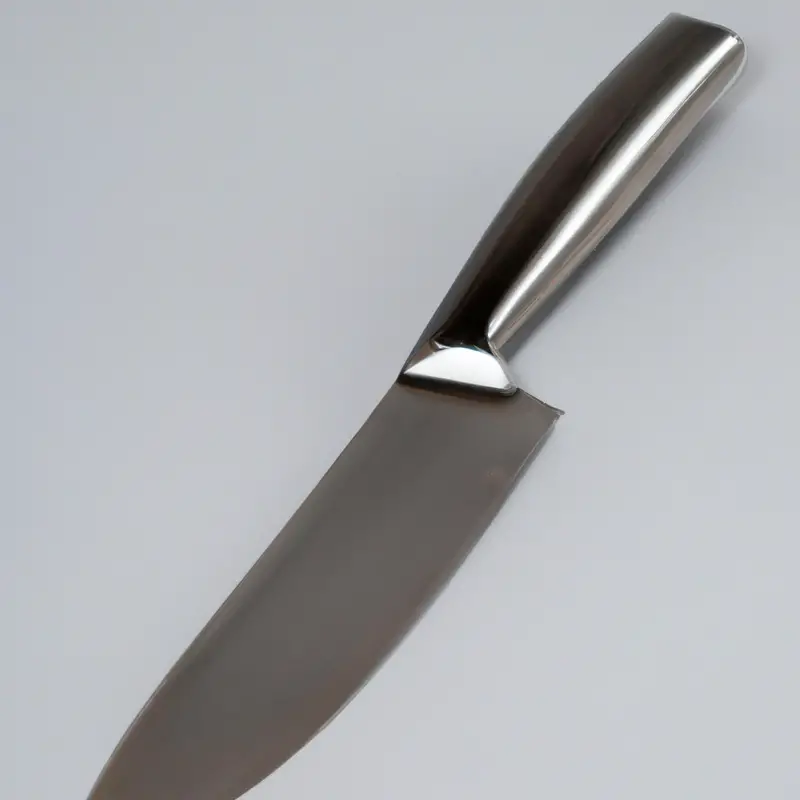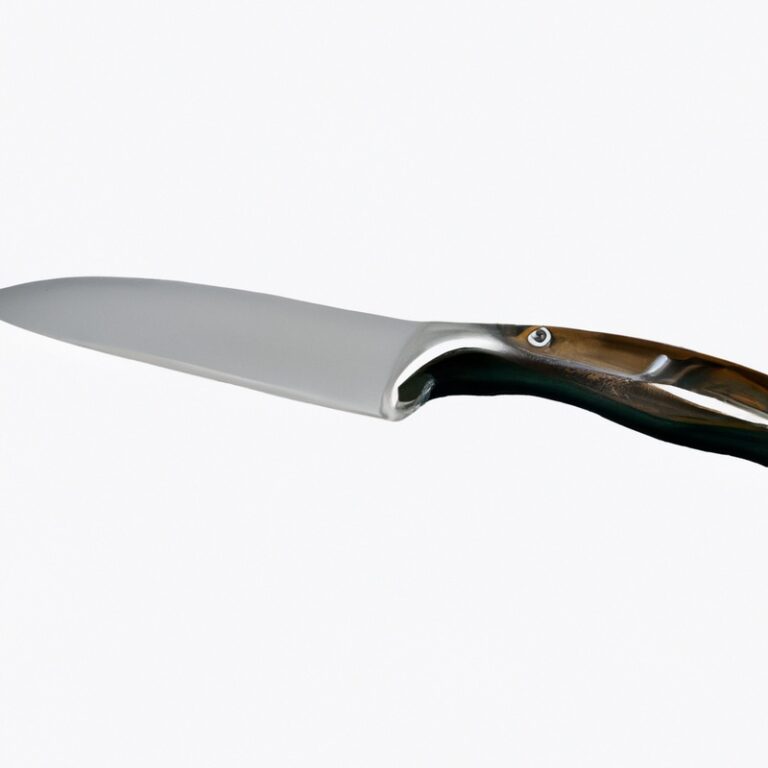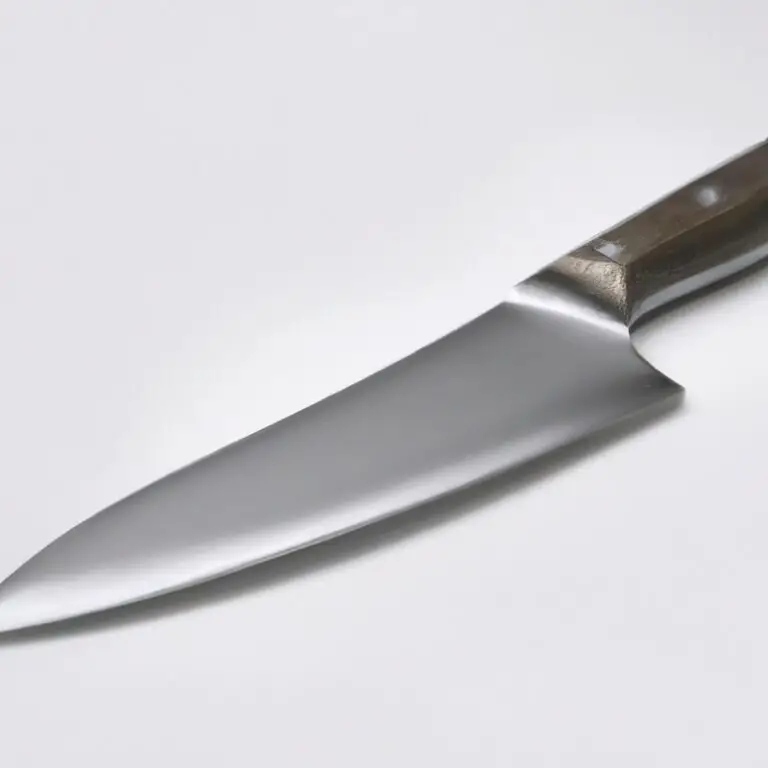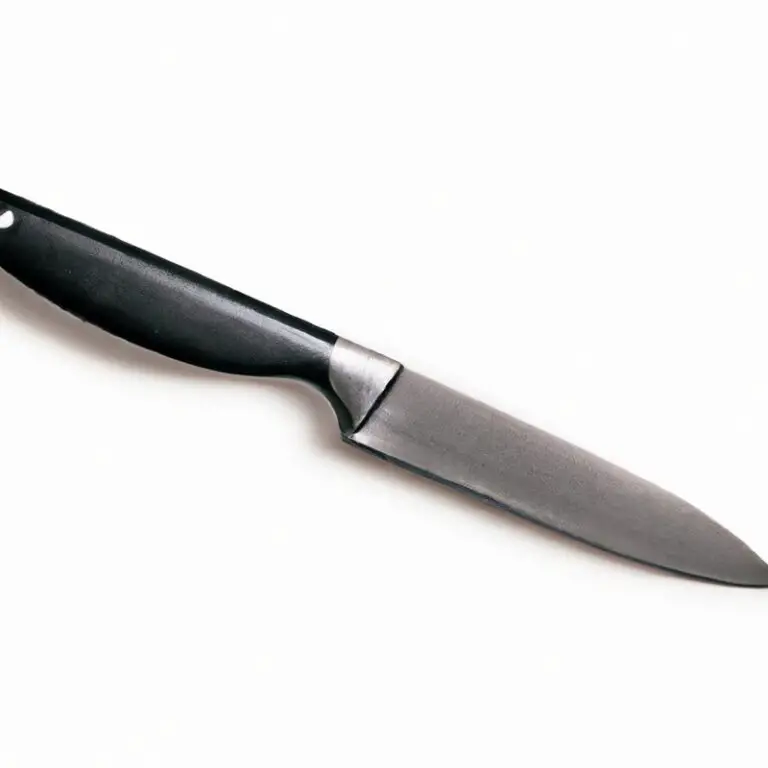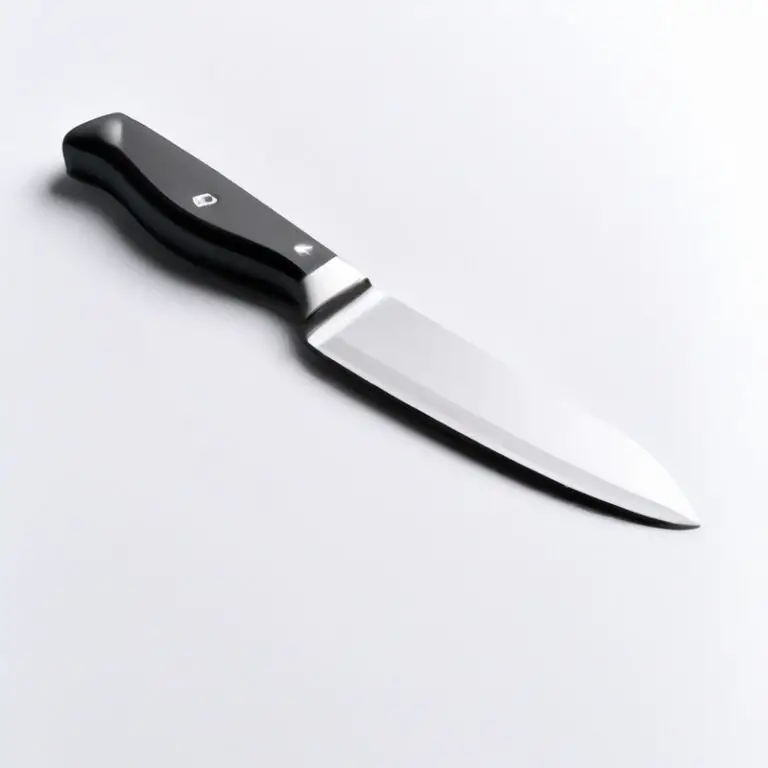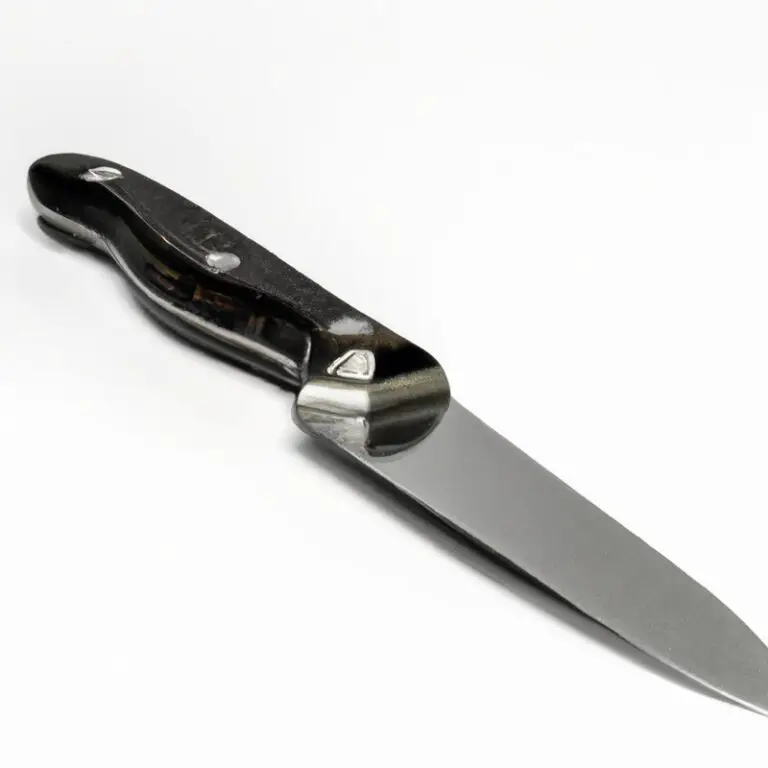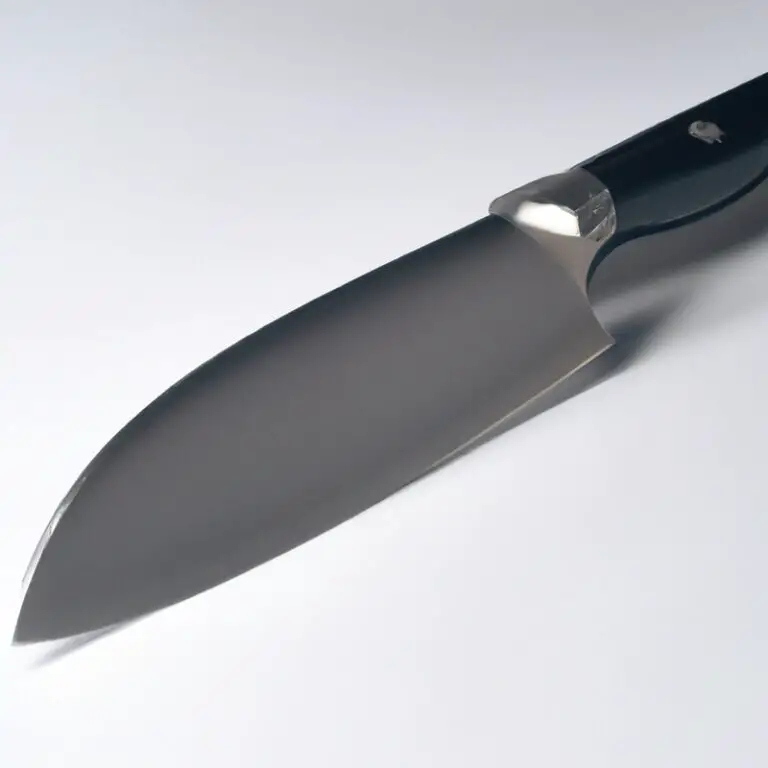How Can I Prevent Accidents While Using a Paring Knife? Stay Safe!
Key Takeaways:
- Always use a sharp paring knife to prevent it from slipping and causing accidents.
- Cut away from your body and keep your non-cutting hand and fingers out of harm’s way.
- Use a cutting board with a non-slip surface to prevent it from slipping while in use.
- Store the paring knife in a knife block or sheath to keep it safely stored and away from children.
Are you tired of accidentally cutting yourself while using a paring knife in the kitchen? You’re not alone.
Many people find themselves facing this common problem when trying to prepare their meals.
Fortunately, there are several measures you can take to prevent accidents when using a paring knife. In this article, I will be discussing some of the ways you can stay safe while handling this sharp kitchen tool.
By following a few simple steps, you can avoid cuts and injuries and enjoy preparing your meals worry-free.
So, let’s get started!
| Preventive Measures | Explanation |
|---|---|
| Keep your knife sharp | A sharp knife requires less force to cut, which reduces the likelihood of slipping and causing injury. |
| Use a cutting board | A cutting board provides a stable surface to work on and prevents the knife from slipping. |
| Keep your fingers away from the blade | Always use a claw grip, curling your fingers inward and keeping your fingertips behind the blade while cutting. |
| Do not rush | Take time to focus on what you’re doing and be mindful of your movements while cutting. Rushing increases the chance of making a mistake and causing injury. |
| Store your knife safely | When not in use, keep your knife in a sheath or a block to prevent accidental contact with the blade. |
Understanding the Risks of Using a Paring Knife
Using a paring knife can be a risky affair if not handled with care. The small and sharp blade of a paring knife is designed for intricate tasks and therefore requires steady hands and mindful actions.
Among the numerous risks, the most common injuries related to paring knife usage include cuts and punctures to fingers and hands.
Additionally, inattention and distraction while using a paring knife pose a considerable risk as well. It’s therefore essential to be aware of the risks posed by a paring knife and take necessary precautions to avoid injuries.
In the ensuing sections, we’ll go through the specific strategies to ensure safe paring knife usage.
Choosing the Right Paring Knife for Safe Cutting
Choosing the right paring knife for safe cutting is crucial to avoid accidents. Here are some tips to choose the right paring knife:
- Blade Material: Paring knives can have blades made of steel, ceramic, or high-carbon stainless steel. High-carbon stainless steel is the best option as it provides durability, corrosion resistance, and maintains a sharp edge.
- Blade Length: The blade length of a paring knife usually ranges from 2.5 to 4 inches. For safer cutting, choose a paring knife with a shorter blade length.
- Handle Material: The handle should be made of slip-resistant material that provides a good grip. Some options include wood, plastic, or rubber.
- Blade Shape: The most common blade shapes for a paring knife include straight and curved. A straight blade is best for precise cuts, while a curved blade is best for peeling and shaping.
- Weight: Choose a paring knife that feels comfortable and balanced in your hand. A knife that is too heavy may cause fatigue and lead to accidents.
By choosing the right paring knife, you can ensure safety while cutting and avoid accidents in the kitchen.
Maintaining Your Paring Knife in Good Condition
Proper maintenance of your paring knife is crucial in ensuring its longevity and safety during use. Here are some tips to keep your paring knife in good condition:
- Hand wash your knife with mild soap and water, then dry it immediately. Avoid soaking it in water or leaving it wet.
- Keep the blade sharp by using a honing steel before and after each use. Sharpen it with a whetstone when needed.
- Avoid using abrasive materials like steel wool or harsh cleaners that can damage the blade.
- Store your knife in a designated knife block or sheath to prevent it from banging against other utensils.
By implementing these maintenance tips, you can ensure that your paring knife stays sharp, safe, and effective for all your cutting needs.
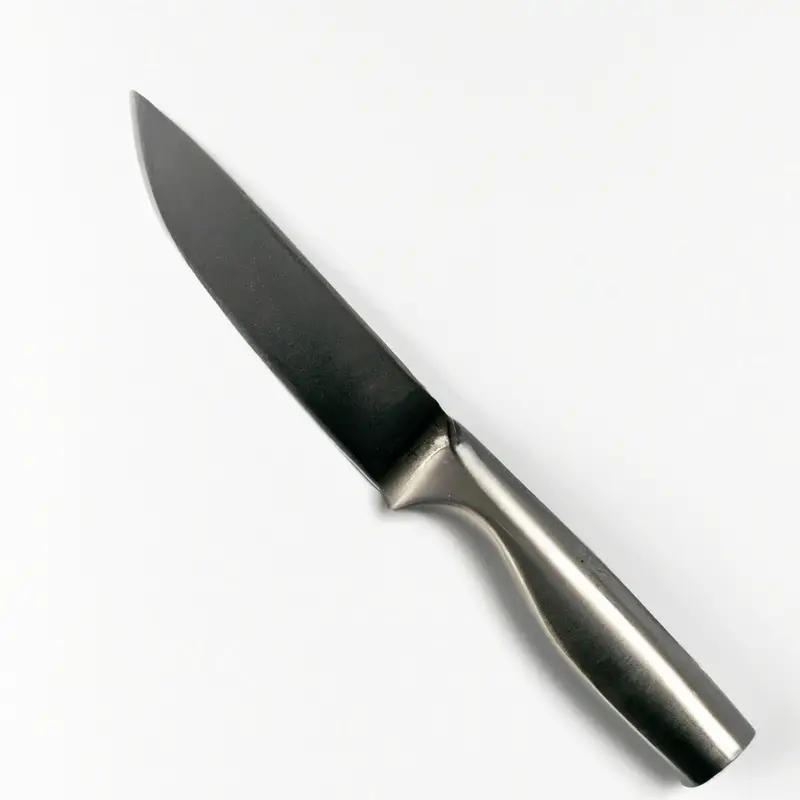
Proper Hand Placement and Grip for Safe Cutting
Proper hand placement and grip are critical to safe cutting with a paring knife. To prevent accidents, place your index finger on the spine of the blade, and curl your other fingers around the handle.
Your thumb and index finger should be in a pinch grip, with your middle finger supporting the blade from below.
This grip provides better control and stability, reducing the risk of slipping or twisting the blade while cutting. You should also avoid holding the paring knife with your fingertips or only using your palm to grip the handle.
Instead, keep a firm grip on the knife with your entire hand for more precision and accuracy.
Remember, practice makes perfect, so take your time to master the proper hand placement and grip before cutting.
Using a Cutting Board to Avoid Slipping
Using a cutting board is an essential step in preventing slip-induced accidents while using a paring knife. The cutting board provides a secure and stable base for your knife, allowing it to make accurate and precise cuts with minimum risk.
When selecting a cutting board, choose one that is sturdy and won’t move around on your countertop during use.
A wooden or plastic cutting board is best, as they are easier on the blade and less likely to dull it quickly. Avoid glass or marble cutting boards, as they can be too slippery and hazardous.
It is essential to maintain your cutting board’s cleanliness with regular washing and disinfection to prevent cross-contamination.
Note that once your cutting board is worn out, it should be replaced.
Keeping the Blade Sharp for Accurate and Safe Cuts
Keeping your paring knife blade sharp is crucial for safe and accurate cuts. A sharp blade requires less pressure to be applied, reducing the risk of slipping and injuring yourself.
Make sure to sharpen your paring knife frequently, either with a sharpening stone or a honing rod.
A sharpening stone is ideal for restoring a dull blade while a honing rod is used to maintain an already sharp edge. Always follow the manufacturer’s instructions for sharpening your knife.
Remember to also keep your blade clean and dry to prevent rusting.
A dull, rusty blade can slip and cut you unexpectedly, causing serious injury.
Avoiding Distractions and Multitasking While Using a Paring Knife
It’s important to focus solely on using a paring knife to avoid distractions and multitasking. Trying to do other tasks while using a sharp knife can increase the risk of accidents and injuries.
Always give your full attention to the task at hand, keeping distractions like phones and other electronic devices away from your workspace.
Avoiding multitasking will also ensure that you can maintain proper hand placement and grip on the knife, leading to more accurate and safe cuts. Remember, a paring knife is a sharp tool that requires complete attention and concentration, so put aside any other tasks and focus solely on the cutting process to avoid accidents.
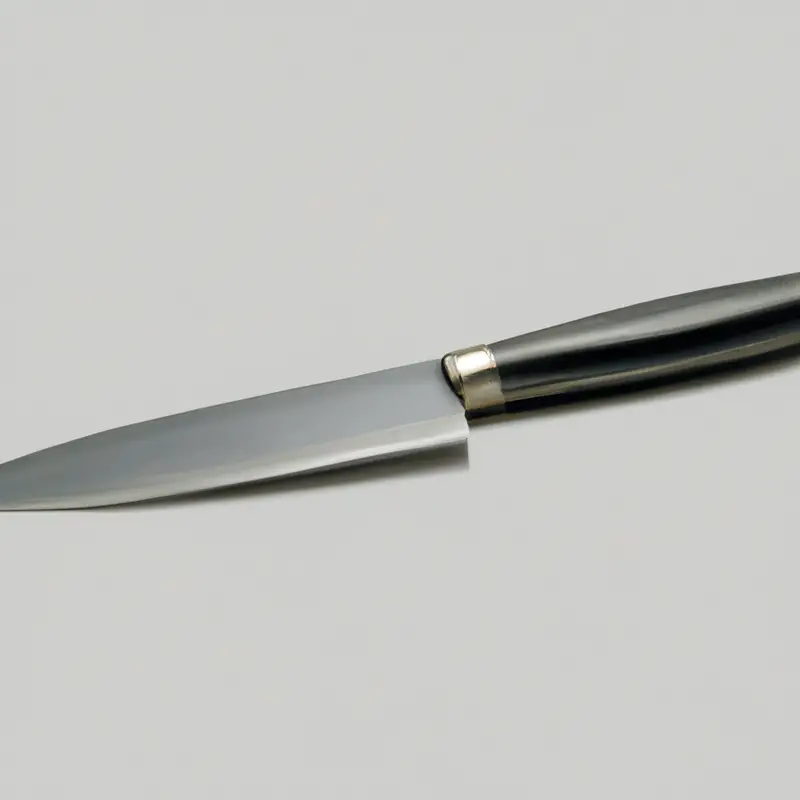
Cleaning and Storing Your Paring Knife Correctly
Cleaning and storing your paring knife correctly is crucial for its longevity and safe usage. After each use, wash the paring knife with warm water, soap, and a soft sponge to avoid any scratches and damages to the blade.
Dry the knife with a soft cloth and store it in a safe and dry place, preferably in a knife block or sheath to avoid rust and bacteria growth.
Make sure to store the knife away from other sharp objects and materials that may damage or dull the blade. Avoid soaking the knife in water or using harsh detergents, as this may damage the blade’s sharpness and cause rust.
It’s essential to regularly sharpen the knife blade using a sharpening stone or honing rod to maintain its sharpness and precision.
By following these simple cleaning and storing tips, you can ensure the longevity and safety of your paring knife.
Training and Practice for Better Cutting Techniques
Training and practice are essential for improving your cutting techniques and preventing accidents while using a paring knife. You can take a course on basic knife skills or watch videos to learn proper techniques.
Remember to use the claw method when holding your food item to prevent injuries to your fingers.
Start with slow and deliberate cuts, and build up speed over time. It is also important to master different cutting styles such as chop, rock, and slice.
Practice on different food items to gain experience and confidence.
Lastly, always use caution and focus when using a paring knife, and never rush through the cutting process.
Seeking Medical Assistance for Accidents and Injuries
Accidents while using a paring knife can range from minor cuts to severe injuries that require immediate medical attention. If you have sustained an injury while using a paring knife, seeking medical assistance is crucial to prevent infections and promote healing.
Some injuries may require urgent medical attention if they involve deep cuts, excessive bleeding, or damage to nerves or tendons.
In such cases, call emergency services or visit your nearest emergency room immediately. For minor injuries, wash the wound thoroughly with soap and water, and apply pressure to stop bleeding.
If the wound is deep, cover it with a sterile dressing and seek medical attention.
It is vital to keep the wound clean and dry to prevent infections. If the wound shows signs of infection, such as redness, swelling, or discharge, seek medical attention immediately.
Remember, taking timely medical assistance can prevent complications and promote faster healing.
As a precaution, keep a first-aid kit at home and familiarize yourself with basic first-aid procedures.
Final Verdict
Using a paring knife can be a simple and safe task if proper precautions and techniques are applied. Remember to always choose the right knife for the task, maintain it in good condition, and keep your hand placement and grip correct.
Use a cutting board, keep the blade sharp, and avoid distractions while cutting.
Proper cleaning and storage are also essential. However, accidents can still happen.
If you experience a cut or injury, seek medical assistance immediately.
By implementing these tips and techniques, you can confidently use a paring knife without fear of accidents or injuries. Practice makes perfect, and with time and patience, you can become a proficient and safe knife user.
Stay safe!

